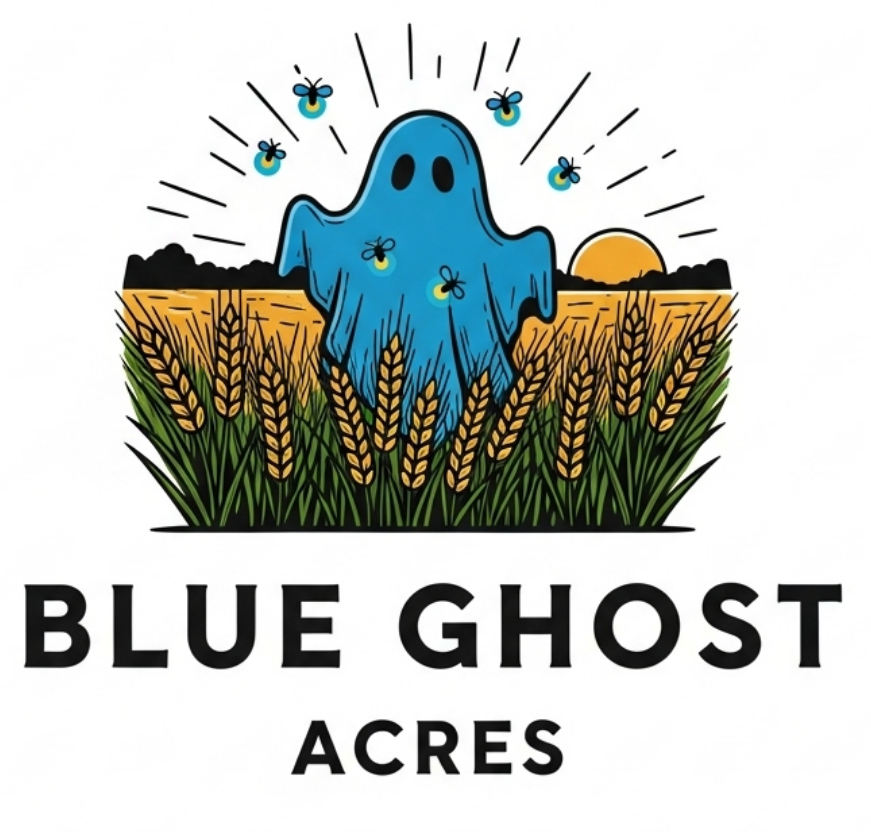Luffa vs. Synthetic Sponge: 5 Reasons to Make the Natural Switch
Take a quick look under your kitchen sink. Chances are, you’ll find a brightly colored, rectangular plastic sponge. It’s one of the most common cleaning tools in the modern home, something we use and toss without a second thought.
But have you ever stopped to ask what that sponge is actually made of? Or where it goes when you throw it away?
When you dig into the details, that simple kitchen sponge tells a surprising story. Here at Blue Ghost Acres, we believe in simple, powerful alternatives that are better for our homes and our planet. Here are five compelling reasons to ditch the plastic and make the switch to a natural luffa sponge.
1. They're a Plant, Not Plastic
The most significant difference is the source. That familiar synthetic sponge is a petroleum product, typically made from polyurethane. It’s a plastic, manufactured in a factory.
A luffa, on the other hand, is a plant. It’s a type of gourd that grows on a vine, soaking up sunshine and water in a garden—like the ones we grow right here at Blue Ghost Acres. It’s a simple, renewable resource grown from the earth.
2. Say Goodbye to Microplastics
Every time you scrub a pot or wipe a counter with a synthetic sponge, it sheds invisible, tiny fibers called microplastics. These plastic particles wash down your drain, pass through water treatment facilities, and end up in our rivers, lakes, and oceans. Choosing a luffa is a simple way to opt out of this cycle. It contains zero plastic and sheds only natural, biodegradable fibers.
3. Better for Your Skin
If you use a sponge in the bath, this one’s for you. A luffa’s unique fibrous texture makes it a perfect natural exfoliant. It’s firm enough to slough away dead skin cells and stimulate circulation, but gentle enough for regular use, leaving your skin feeling smooth and revitalized. It’s nature’s perfect tool for skincare.
4. They Dry Faster and Stay Cleaner
Have you ever picked up a kitchen sponge and been hit with that unpleasant, sour smell? That’s the smell of bacteria thriving in the damp, dense structure of the plastic sponge. Because a luffa is made of a loose, open weave of natural fibers, air flows through it freely. It dries out completely between uses, making it far more resistant to mildew and bacterial growth.
5. They're Completely Compostable
This is the beautiful end to a luffa’s life story. After weeks or months of use, when your luffa has finally worn out, what do you do with it? You simply toss it into your compost pile. It will break down and return to the soil, creating a truly zero-waste, "earth-to-earth" lifecycle.
A synthetic sponge, however, will go to a landfill, where it will sit for an estimated 500+ years without breaking down.
A Small Switch with a Big Impact
Choosing a luffa over a plastic sponge might seem like a small act, but it’s a meaningful one. It’s a vote for a renewable resource, a healthier planet, and a more natural way of life.
Ready to make the switch? You can start today by trying one of our homegrown, hand-cured luffas from the Blue Ghost Acres shop.

